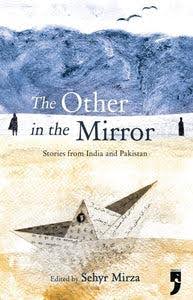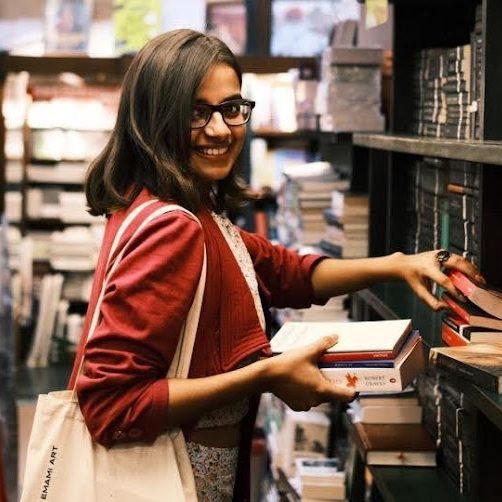
Do good fences really make good neighbours? – Srilagna Majumdar reviews Sehyr Mirza’s edited volume of stories and narratives
LinkedIn:
https://www.linkedin.com/in/srilagna-majumdar-aa547a1a7/
Title : The Other in the Mirror: Stories from India and Pakistan
Author : Sehyr Mirza (Ed)
Genre : Fiction
Language : English
Publisher : Yoda Press
Year : 2022
Pages : 234
Price : Rs. 572/-
ISBN No : 9382579796
‘There are stories that you live.
And there are stories that live with you.’
In most instances, the stories of loss and longing are the ones most treasured in a family line and passed on from one generation to the other. The ones uprooted from their homeland for decades, for no fault of theirs, often find solace in flitting through the pages of their memory ledger. The Other in the Mirror: Stories from India and Pakistan, edited by Sehyr Mirza and published by Yoda Press in 2022, is a collection of twenty-one such poignant tales from the tumultuous time of 1947. The contributing authors range from Gulzar to Anirudh Kala, from Saaz Agarwal to the editor herself. Together, they create a diverse and mesmerising web of untold stories that trace the effects of socio-religious conflicts on the human body in multiple forms and ways.
The concept of ‘body’ and how it is perceived at times of political and socio-religious turmoil looms over almost all Partition stories. Women’s bodies, since time immemorial, have been symbolic of, and seen as, spaces that hold honour. During multiple communal conflicts and any form of hostility among groups, women’s bodies have been the first zones to be attacked, since humiliating the female body would translate to humiliation of a whole social group or community, to which that woman belongs. During desh bhaag, the largest mass migration that Asia has seen, women had their bodies arbitrarily violated by men of the opposite religion. Being abducted, raped, maimed, used and devalued repetitively over those chaotic years during the late 1940s, women had difficulty finding out what their identities would mean when not seen in accordance with their physicality. The essay titled, Do Women Have a Country? by Ritu Menon provides us with important perspectives on this specific feeling, when she writes,
“From Jeet Masi in Jammu we heard about how she went back to Muzaffarabad after 40 years and met every single woman who had been abducted. About how, in every home she visited, special vegetarian food was cooked for her; and how the doctor who now lived in the house that had belonged to her parents, said he would gladly give it back to her if she wanted it.
Kammoben Patel, who was in charge of recovering abducted Hindu women from West Punjab, told us how she occasionally helped recovered women to return to their ‘captors’, because the trauma of relocation would have been unbearable for them.”
Stories like Boundary Line by Naeem Baig and The Enemy by Asghar Wajahat focus on different implications of borders on one’s present as well as the past that they left behind.
Indians, for instance, have been taught to perceive the Pakistanis as the ‘Other’ or the ‘enemy’. Even a small child in India dreams of becoming an army man just for the sake of bombing Pakistan, his country’s ‘dushman’ (foe) and tear apart, often literally, the physical structure of his enemy.
The militant border, hegemonic in nature, denies any direct contact between the citizens of the two countries. All communications happen only through certain official channels, thus letting each side believe that the other side is, in all ways, the enemy land. The commoners do not get a chance to realise that their supposed enemy’s body is the same as their own. They have never shaken hands.
Haunting implications of the Partition on the bodies of men and women are noticed in Sadat Hassan Manto’s short stories, which always leave the reader astounded by the atrocious reckoning of the time. Khol Do, Thanda Gosht and Kaali Salwar are three of his stories which, through short and crisp sentences, and vivid details, shake us from our comfort zones and make us confront the vulnerabilities of the human body and the ambiguities that can accompany it.
While Crossing the Raavi by Gulzar throws light upon a spine-chilling haunting incident in a man’s family life during 1947, the protagonist of Lala Jaswant’s Haveli is torn between telling his homeland’s tragic fate to his ailing grandfather. The pain of uprooting oneself from one’s ‘watan’ is something one has to carry throughout one’s lifetime.
“The border ripped apart the bust of the land”, Saeed Ahmad, in the story A Snowful Desire, narrates how the barbed wires and the cross-border conflicts ultimately snatched several childhoods from the natural beauty they grew up amidst. In one way, the body of India, the deshmaata (i.e. mother-country) of several who loved their land and its people irrespective of any religious connotation, was torn apart without their consent.
Apart from the handful of stories mentioned, there are, in total, twenty-one stories narrating some of the most profound and ever-lasting yearning and loss.
The name of this collection suggests that while letting our minds judge the otherness of the people across the rigid border, we often forget that the ‘Other’ is a reflection of our own selves.
Lastly, Priya Kuriyan’s vibrant illustrations accompanying each story merit special mention. They capture and bring out the true spirit of each story. The translators also did their part in keeping the true essence of the original stories intact. In addition to all of the above, this collection will be long remembered for the large number of moving Urdu stories that it carries.
■■
Author’s Bio:
Srilagna is based in Kolkata and completed her education at the Department of History, Jadavpur University. She is currently pursuing a second masters in Migration and Diasporic Studies, while simultaneously working as an archivist and researcher in an art gallery. She is an avid reader and animal lover.

Subscribe to our newsletter To Recieve Updates
Join our newsletter to receive updates